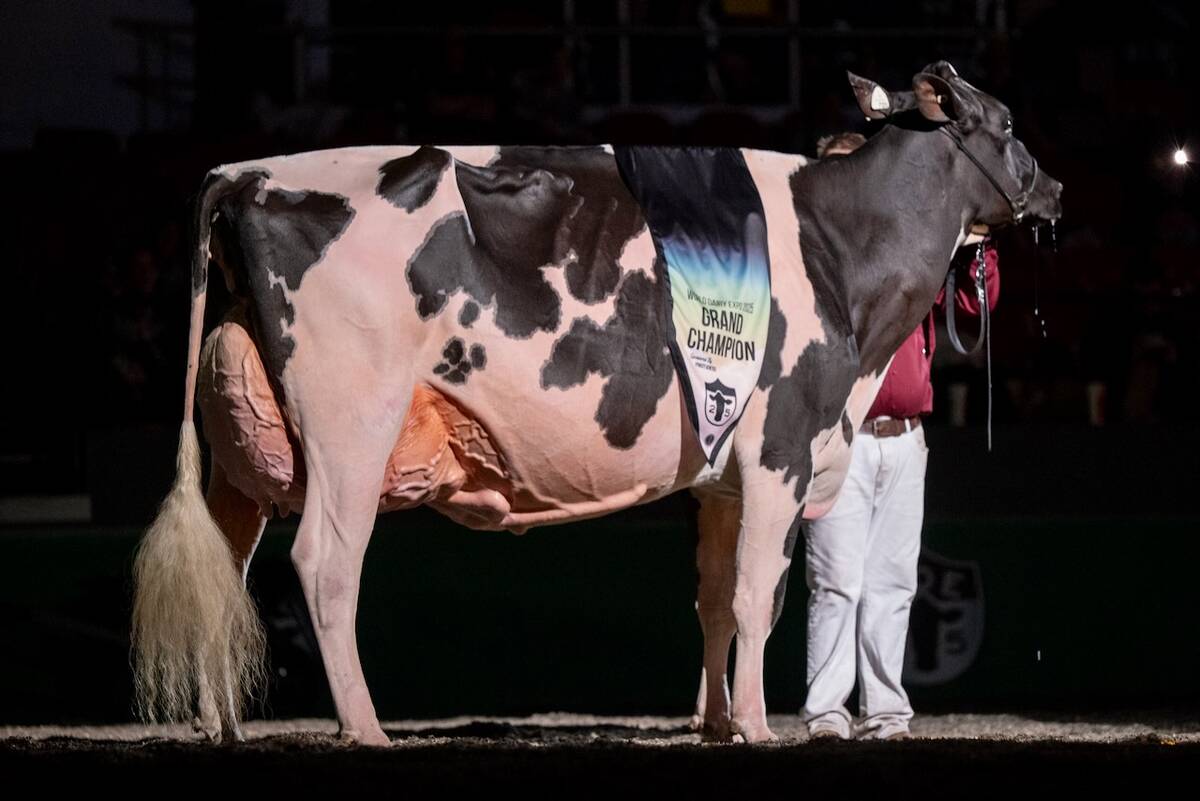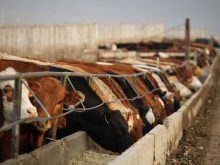REGINA – It has become a tradition for Limousin bred steers and heifers to win the Canadian Western Agribition carcass competition.
Colin Baber of Balcarres, Sask., had the top steer carcass and reserve went to Delbert Warren of Ogema, Sask. Andy Rock and Stan Skeels of Rimbey, Alta., had the best heifer carcass and the reserve was Martin Firby of Minnedosa, Man. The top two steers and top three heifers were all Limousin.
The breed, originally from France, has always been promoted as a carcass type. For this competition judges are looking for red meat yield. The grand champion steer was at 68 percent and the reserve a close second at 67 percent. They do not have to fit into the AAA category, said Warren Fuchs, president of the Saskatchewan Limousin Association.
Read Also

Canadian-bred cow wins World Dairy Expo Holstein show
A cow bred in Saskatchewan, Lovhill Sidekick Kandy Cane, is the Grand Champion Holstein at the 2025 World Dairy Expo.
He credits the breed with being a moderate animal that crosses well with anything.
“We can breed them to any type of cow and get the same patterned calf. We keep consistency with the Limousin bulls,” said the Bethune, Sask., breeder who raises 50 registered purebred and 350 commercial cattle. His commercial cattle tend to be Limousin crossed with Angus, Charolais or Simmental.
The Agribition cattle are killed at XL Foods in Moose Jaw. The hide comes off and the carcasses are examined by Canadian Grading Agency inspectors so the test is blind.
“They have no idea what the breed is. All they have is a tag number,” Fuchs said.
The Limousin provincial and national associations put extra money into the competition to entice more people to enter. As the breed chalks up another win, it is a good promotional tool during a time of depressed cattle prices because cattle feeders need cattle that will grade well and make them more money.
Another bonus for the breed is a recent report from Adelaide University in Australia where researchers claim to have identified a gene found most often in Limousin cattle that increases beef yield. Called myostatin F94l, it is just one of several with a large effect on yield.
Animals with this gene have 13 percent larger ribeye areas and four percent more total retail yield, according to the research.
The Australian researchers are negotiating to provide a commercial test to identify animals with the gene.















